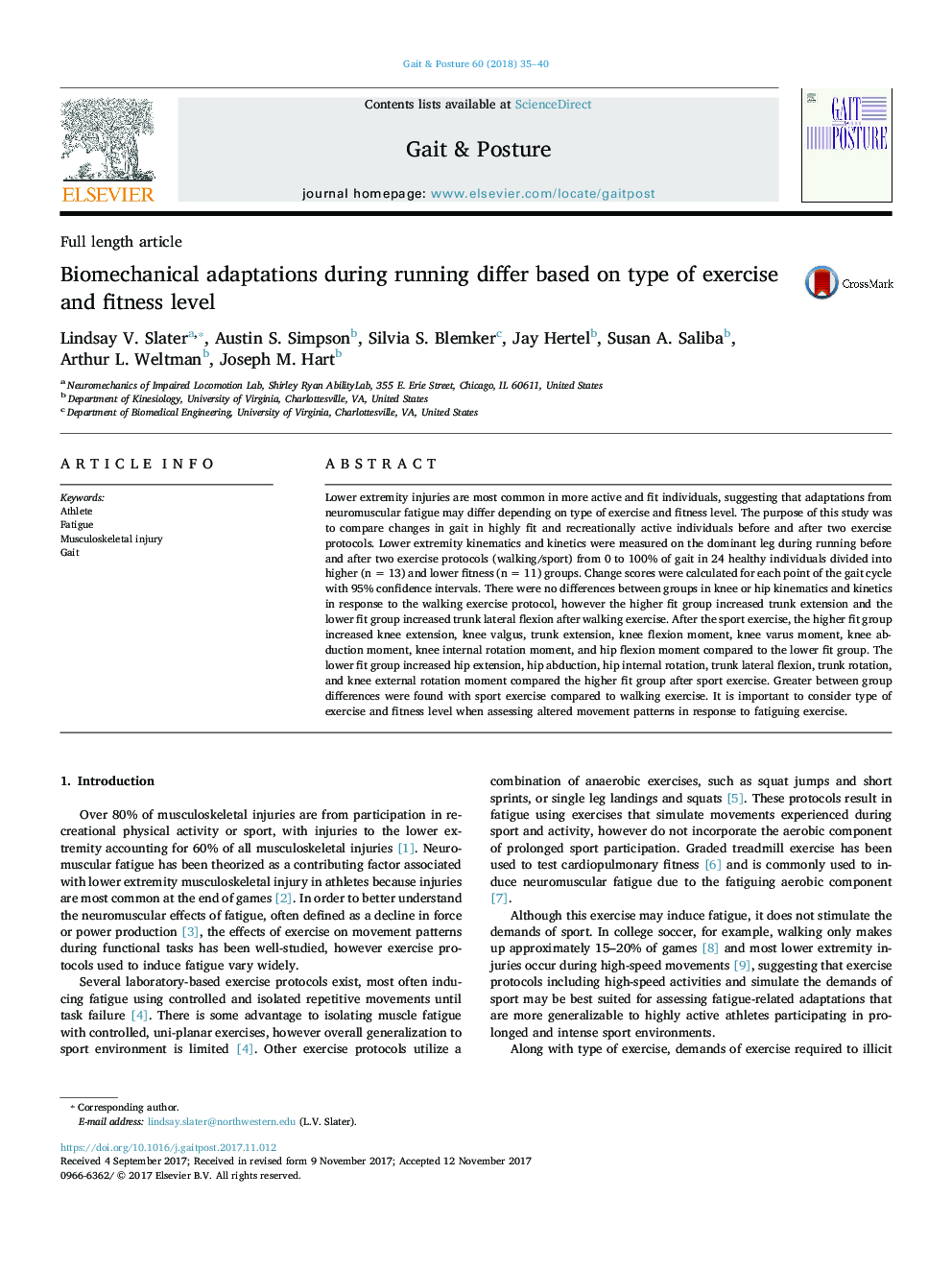| کد مقاله | کد نشریه | سال انتشار | مقاله انگلیسی | نسخه تمام متن |
|---|---|---|---|---|
| 8798603 | 1603835 | 2018 | 6 صفحه PDF | دانلود رایگان |
عنوان انگلیسی مقاله ISI
Biomechanical adaptations during running differ based on type of exercise and fitness level
ترجمه فارسی عنوان
سازگاری بیومکانیک در حین در حال اجرا بر اساس نوع ورزش و سطح آمادگی جسمانی متفاوت است
دانلود مقاله + سفارش ترجمه
دانلود مقاله ISI انگلیسی
رایگان برای ایرانیان
کلمات کلیدی
ورزشکار خستگی، آسیب اسکلتی عضلانی، راه رفتن،
موضوعات مرتبط
علوم پزشکی و سلامت
پزشکی و دندانپزشکی
ارتوپدی، پزشکی ورزشی و توانبخشی
چکیده انگلیسی
Lower extremity injuries are most common in more active and fit individuals, suggesting that adaptations from neuromuscular fatigue may differ depending on type of exercise and fitness level. The purpose of this study was to compare changes in gait in highly fit and recreationally active individuals before and after two exercise protocols. Lower extremity kinematics and kinetics were measured on the dominant leg during running before and after two exercise protocols (walking/sport) from 0 to 100% of gait in 24 healthy individuals divided into higher (n = 13) and lower fitness (n = 11) groups. Change scores were calculated for each point of the gait cycle with 95% confidence intervals. There were no differences between groups in knee or hip kinematics and kinetics in response to the walking exercise protocol, however the higher fit group increased trunk extension and the lower fit group increased trunk lateral flexion after walking exercise. After the sport exercise, the higher fit group increased knee extension, knee valgus, trunk extension, knee flexion moment, knee varus moment, knee abduction moment, knee internal rotation moment, and hip flexion moment compared to the lower fit group. The lower fit group increased hip extension, hip abduction, hip internal rotation, trunk lateral flexion, trunk rotation, and knee external rotation moment compared the higher fit group after sport exercise. Greater between group differences were found with sport exercise compared to walking exercise. It is important to consider type of exercise and fitness level when assessing altered movement patterns in response to fatiguing exercise.
ناشر
Database: Elsevier - ScienceDirect (ساینس دایرکت)
Journal: Gait & Posture - Volume 60, February 2018, Pages 35-40
Journal: Gait & Posture - Volume 60, February 2018, Pages 35-40
نویسندگان
Lindsay V. Slater, Austin S. Simpson, Silvia S. Blemker, Jay Hertel, Susan A. Saliba, Arthur L. Weltman, Joseph M. Hart,
